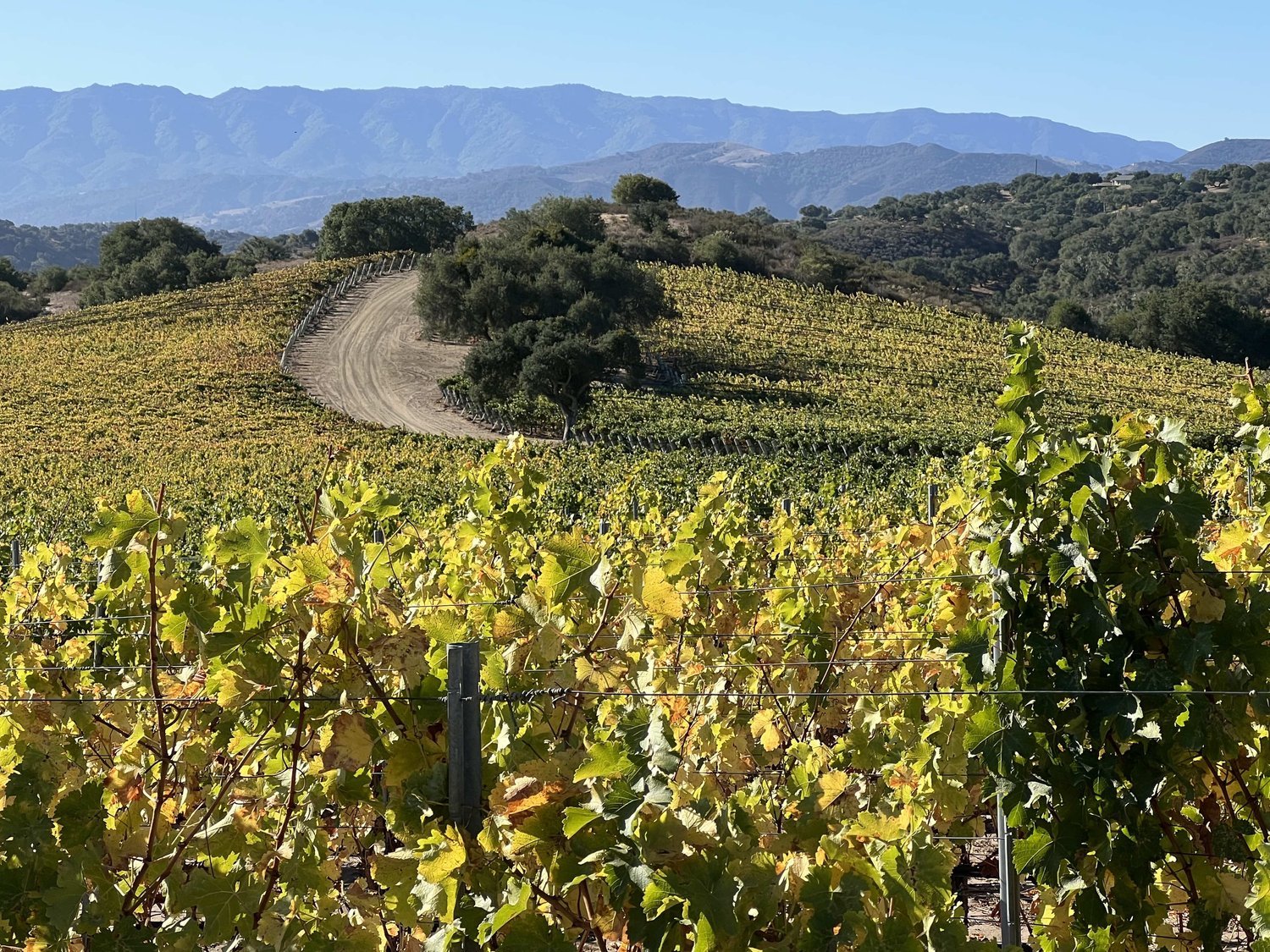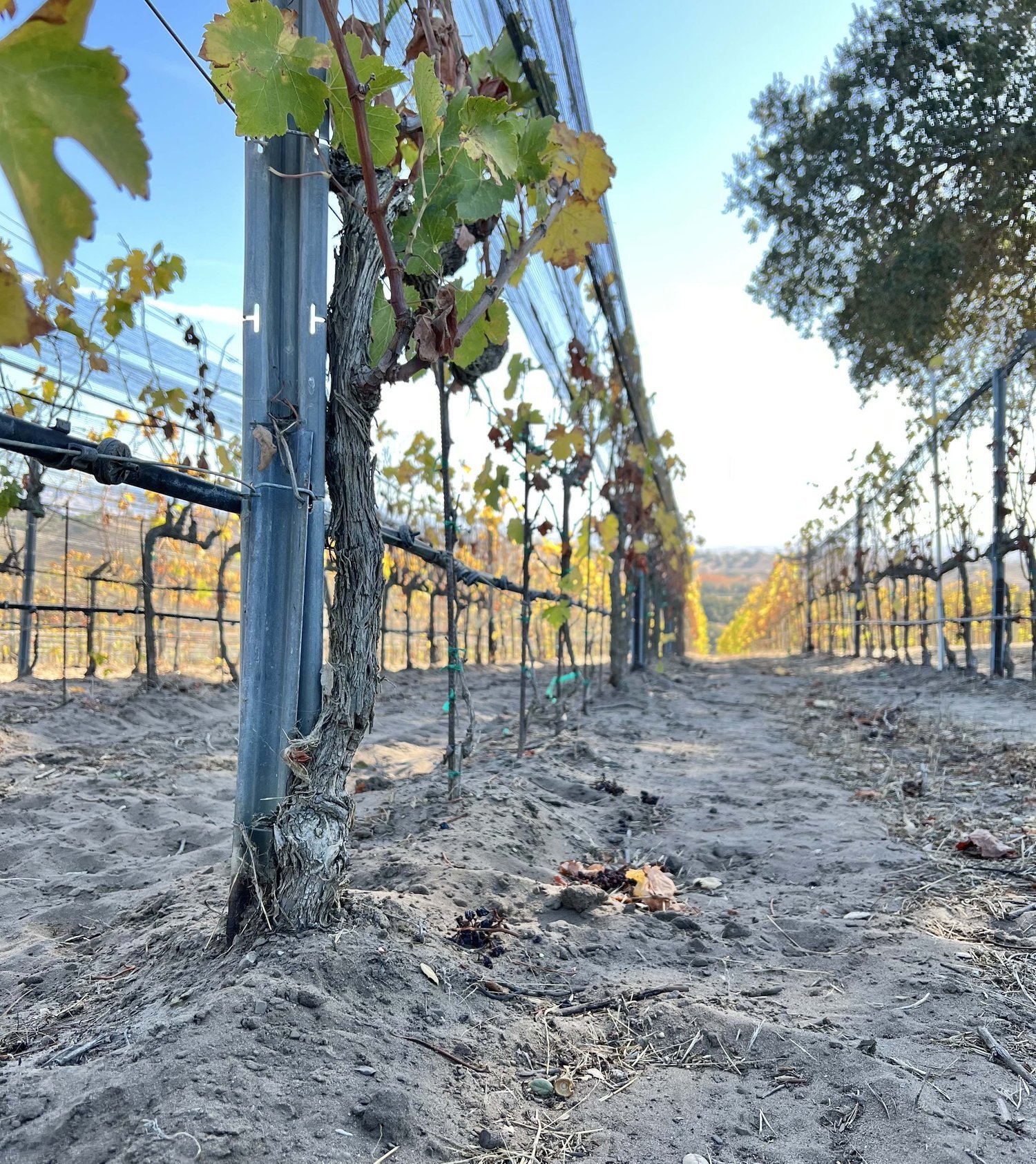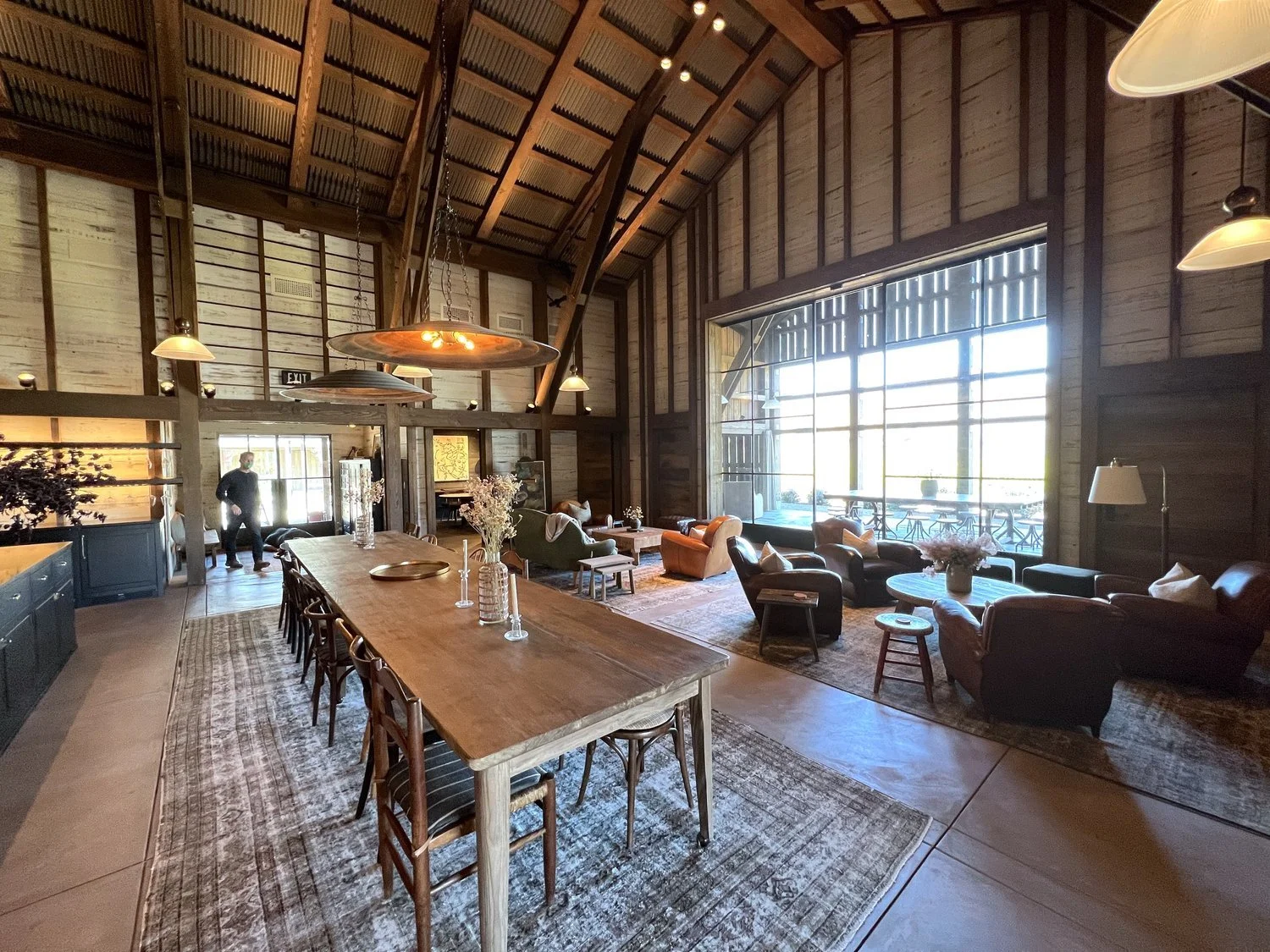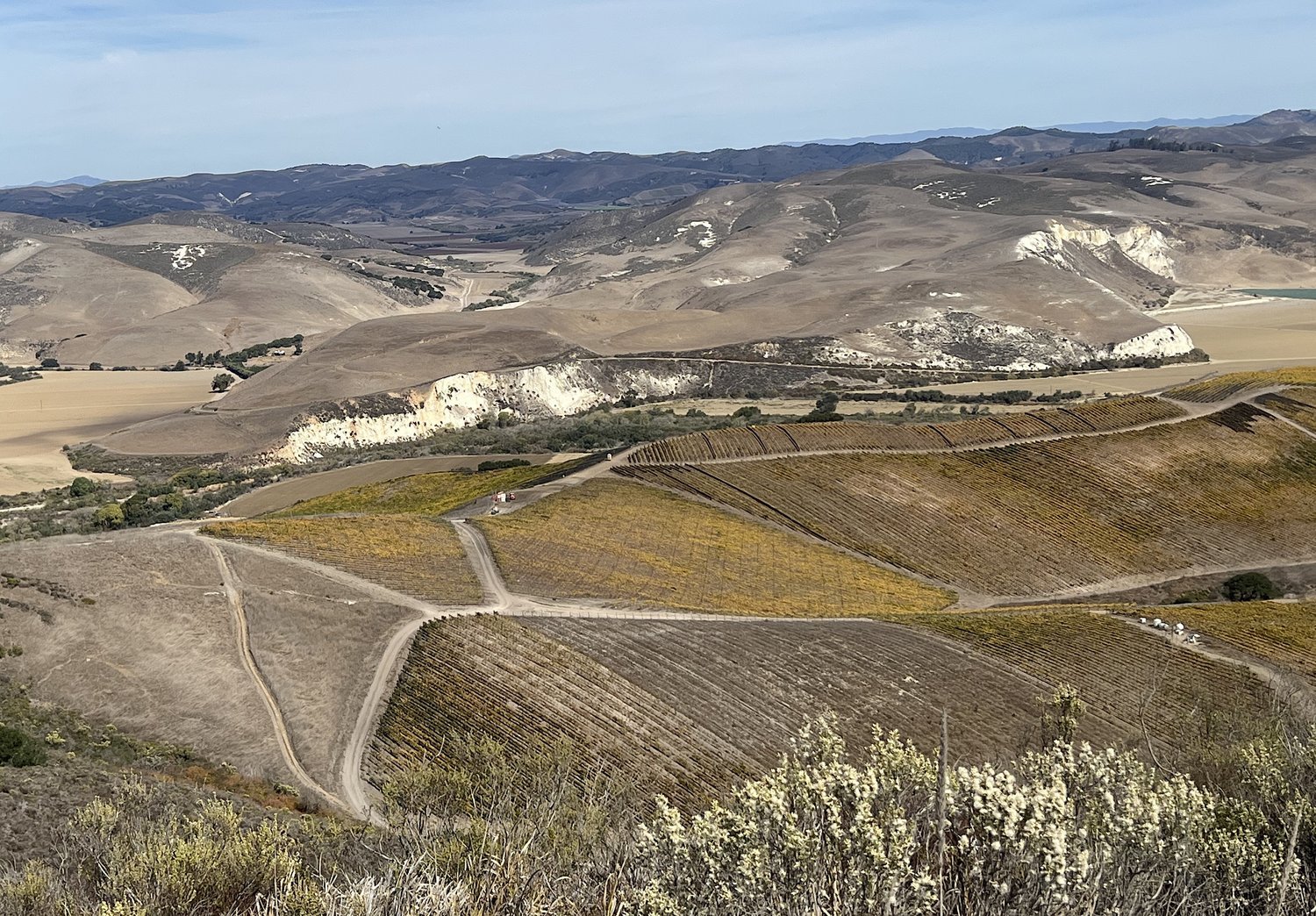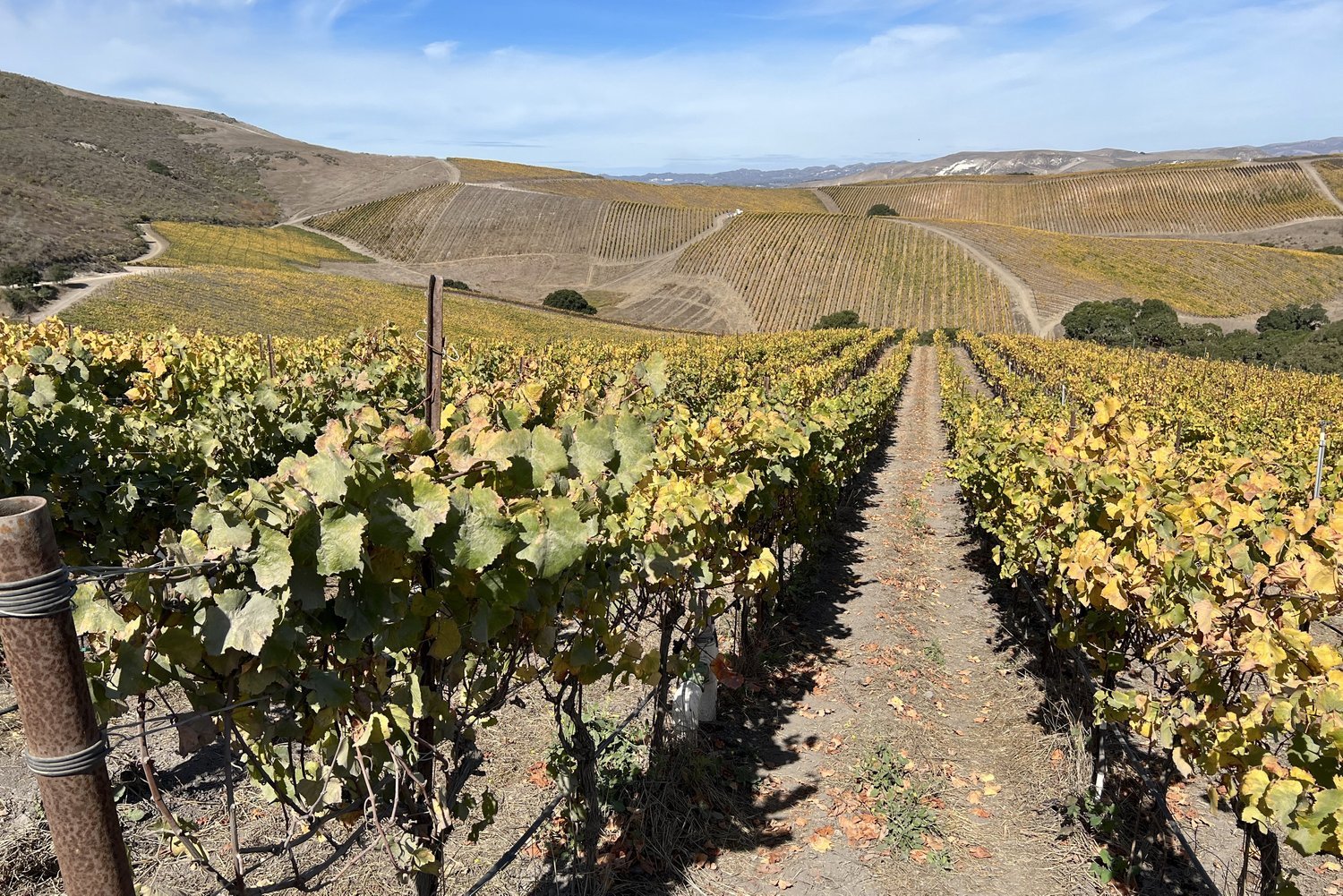TERROIR DEFINED: VISITING JONATA & THE HILT
“This soil is only good for growing asparagus,” Drew Stapp, the regional sales manager for Jonata and The Hilt, said to me with a smirk as we looked at one of the Jonata vineyards in Ballard Canyon; “That’s what a prominent winemaker from Bordeaux once said to us when he visited the property.”
“Or maybe a golf course,” I said with a grin.
Looking at the sandy soils, in some vineyards so loose and dune-backed that you think you’re at the beach, it’s not hard to understand that point of view. The rolling hills of Ballard Canyon would indeed make for a tremendous golf course, and asparagus is known to thrive in sandy soils. Yet, we were looking at rows of healthy Syrah vineyards.
Had I not already tasted a number of stupendous vintages from the winery, I probably would have been skeptical as well. At one point during our vineyard tour I found myself asking how the vines could even support the weight of the grapes in such an unfettered terrain, let alone produce quality fruit.
Yet, the team at Jonata—lead by winemaker Matt Dees—purposefully sought out the sandiest soils on the estate, believing that those nutrient-starved and desert-esque plots would force the vines to dig deeper into the earth. As he states in one of the company’s educational videos: “Sand is a very poor soil; there’s nothing going on, but there’s also nothing to keep a grapevine from augering in twenty feet, so the vines just keep going until they find water.”
It was mid-October, but there was still fruit hanging from the vines as we moved through the rows. My friend Adam grabbed a cluster of Syrah and said to me: “Look how unbelievably small these berries are! They’re so concentrated.” Indeed they were: dark, dense, each bursting with incredible flavor as I popped a few in my mouth.
“The problem that everyone else saw with sand, we now see as our biggest blessing,” Dees adds; “It’s what makes the wines of Jonata taste like Jonata.” In fact, it’s the lack of plentiful water in the soil, combined with deep-rooted vines, that results in a small, yet concentrated grape size.
“Do you know how many of these you need to make an entire vat of wine?” Adam asked rhetorically.
Drew pointed at the grid-like markings in the vineyard as we emerged from one of the rows; “As you can see in this plot, we’ve actually cut into a square around each individual vine. That’s done to cut off any roots that grow outward rather than straight down.”
As a result of these sandy soils, Jonata is now producing some of the finest wines along California’s Central Coast, boasting a bevy of varietals that include Cabernet Sauvignon, Syrah, and Sangiovese, with a unique character that the Jonata team attributes directly to the soil and vineyard locations. Or, as wine nerds refer to it: terroir.
Located north of the 246 highway between Buellton and Solvang, only 84 of the 586 total acres at the Jonata ranch in Ballard Canyon are planted to vineyards—all of which are in the property’s sandiest segments. As Drew mentioned during our visit, conventional wisdom was put aside from the very beginning when it came to winemaking, and that outside-the-box philosophy has been cleverly worked into the marketing as well. The label’s tête de cuvée is a Cabernet blend called El Desafio—the defiance—and the 2017 vintage just received a whopping 97 point score from renowned critic Antonio Galloni.
So much for asparagus.
We moved to the top of a hill, looking east into the estate, and Drew opened a bottle of the 2016 Todos Ballard Canyon blend—a Syrah heavy blend that also features Cabernet Sauvignon, Petit Sirah, Petit Verdot, and Sangiovese. As we sipped it, all of the concentration we had tasted earlier in that Syrah cluster was imminent on the palate. The fruit produced within these sandy soils are like tiny neutron stars, packed so densely with intensity of flavor that they literally burst upon contact, and that character translates directly into the wines.
It’s uncommon to find such a direct correlation when it comes to terroir. Having worked in the wine industry for more than a decade, I can count on one hand the experiences that painted such a clear picture in my mind, and I was about to have two of them in one day. As we finished our tour of Jonata, I jumped in Drew’s truck for the drive out to The Hilt—Jonata’s sister winery—at the base of Radian Vineyard in the Santa Rita Hills AVA: some of the most rugged and difficult conditions for growing grapes in the region.
The Barn at The Hilt Estate is located just a few miles from the Pacific Ocean, near the historic intersection of Highway 1 and Santa Rosa road, and next to the estate’s Puerta del Mar vineyard. Having tasted numerous wines from the nearby Bentrock and Radian vineyards, I was shocked to learn that both are completely owned by The Hilt, and make up the cepage of their estate wines. Known for their racy acidity coupled with richness and texture of fruit, they’re two of the premier sites in the state for Chardonnay and Pinot Noir.
Heading down the road toward Radian, I quickly realized why Drew needed his gigantic four wheel-drive pickup truck for the tour: we were about to head up a steep dirt road into the heart of the vineyard, a drastic change of elevation on a site that quickly moves from 300 to 700 feet in elevation.
I exited from the cab and stepped down into two inches of pure white dust. It immediately flew into the air, covering my ankles and shins with powder. “We might as well be walking on the moon!” I said to Drew, who laughed in agreement as I reached down to pick up one of the many stones nearby.
“This is all diatomaceous earth,” Drew responded; “It’s the remnant of an ancient sea.”
The most famous chalky vineyard soils that I know of are Chablis and Champagne, both prized for their heavy limestone content which helps preserve acidity in the grapes. It’s part of the reason both wines have extra zip in their Chardonnay, and a mineral-driven flavor profile in the best expressions.
“That hillside over there might as well be the white cliffs of Dover,” Adam added, as we looked down from the top of a vista.
From the top of Radian, you can see the chalk sloughing off the hillsides in every direction, like white paint that’s been added to a Bob Ross landscape. In between the vineyard rows and the shadows, the diatomaceous terrain makes itself readily apparent.
Drew opened a bottle of the 2017 The Hilt Estate Chardonnay in order to put the wine into context, and I immediately felt the energy wash over my tongue. I’ve said it before and I’ll say it again: I’ve never tasted a more electrifying white wine from California in my entire career. The vibrant, lively acidity comes through in the Radian vineyard fruit is unlike anything I’ve ever experienced until now.
The wind whipping off the Pacific also plays a role in shaping the character of the grapes. “We’re basically in a big wind tunnel here,” Drew said, as we stood looking west toward the ocean. “As the wind hits the earth, it kind of recreates the soil; it’s constantly regenerating.” The wind also cools down the vineyard after its daily sun exposure, keeping the grapes from ripening too quickly and preserving the acidity.
Having focused almost entirely on The Hilt Estate Chardonnay up until this point, I was absolutely flabbergasted when Drew popped a bottle of the 2017 The Hilt Estate Pinot Noir, with its heavy Radian component. The aromatics were astounding, the wine was fresh and energetic on the palate, and the mineral, iron-like flavors on the finish were simply haunting. At one point, I stood in the middle of Radian vineyard just completely dumbfounded, looking at the white dust all over my black Nikes, gaping at the jagged hillside, taking in the strength of cool wind against my face, while sipping on two of the most beautiful and compelling wines I’d tasted all year.
As I mentioned before, context and communion on this level almost never happens in the vineyard. I’ve been all over the world—Bordeaux, Burgundy, the Yarra Valley—and I’ve never seen such a clear and direct line drawn between the nature of the soil and its manifestation in the wine itself.
-David Driscoll
